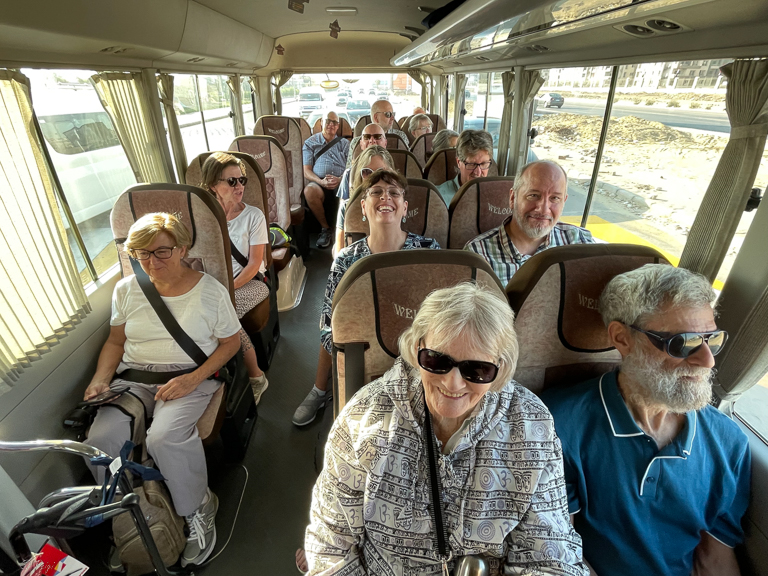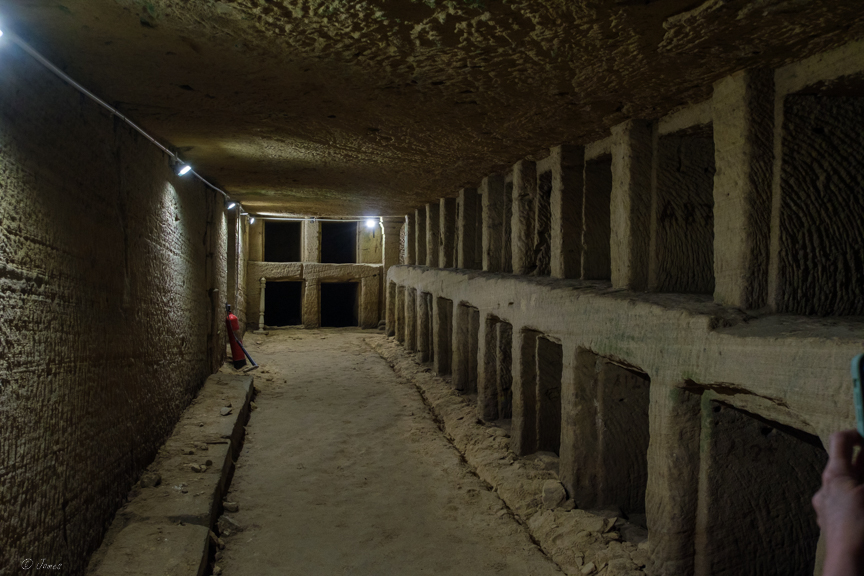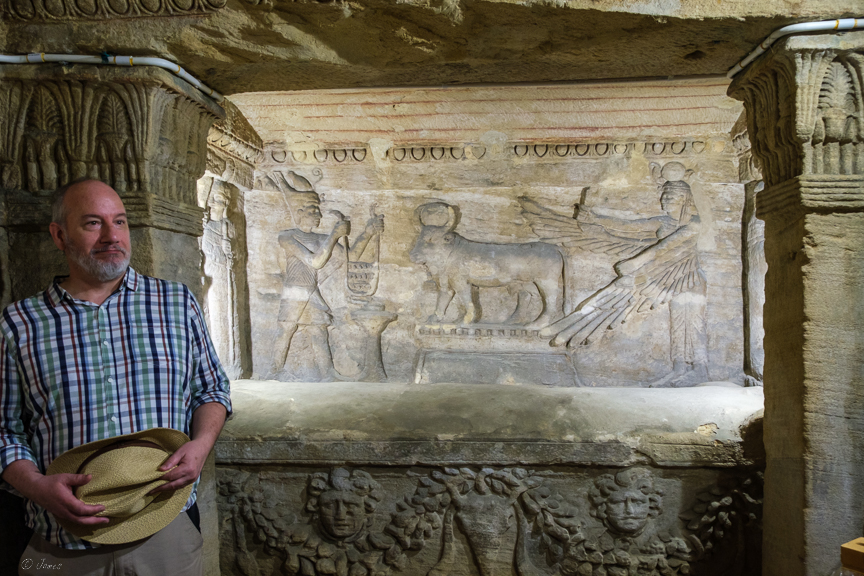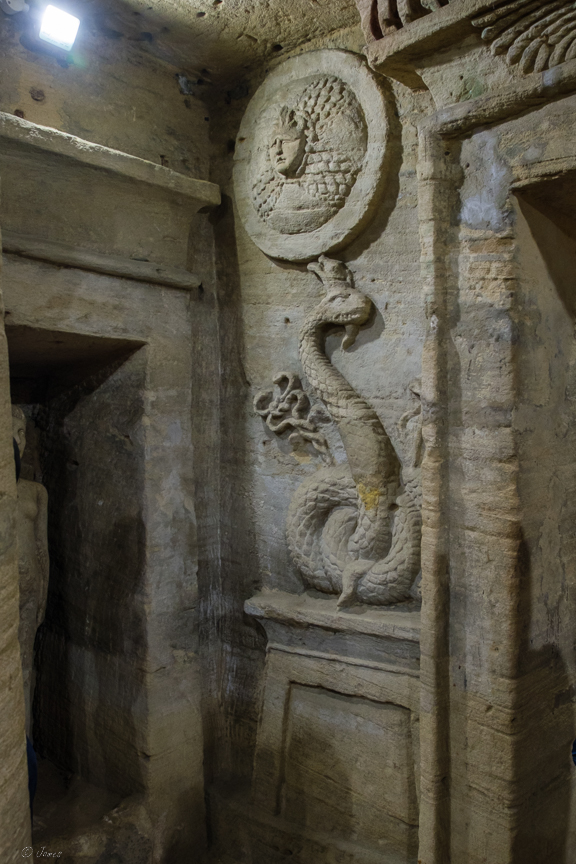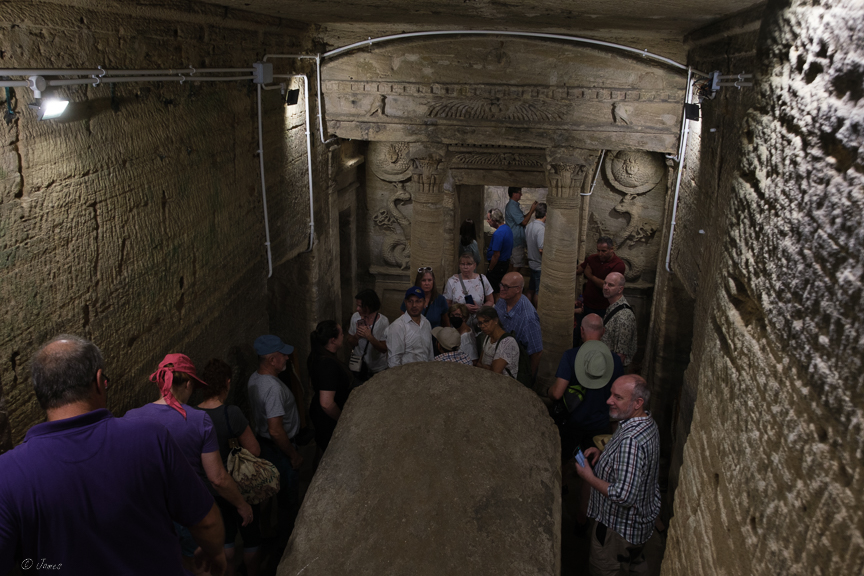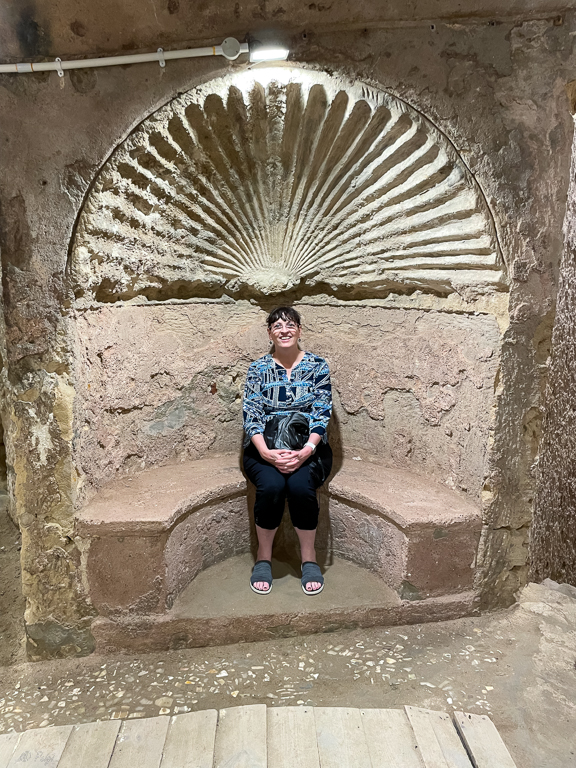The great, ancient Egyptian city of Alexandria has a fascinating history. Alexandria was one of the most important cities in the ancient world, and so there are many temples and monuments associated with the Greek presence in Egypt.
In 332 BC, on the way to his conquest of the Persian Empire, Alexander the Great invaded Egypt. During his brief time here, he made plans to build a great city on the Nile Delta, but he then left and never returned, dying a mere 9 years later. Yet, Alexandria and two of the ‘7 Wonders of the Ancient World’ were constructed here ie the Library and Lighthouse of Alexandria, which have long fallen into ruin. The pyramids of Giza are also on that list, predating Alexandria by nearly 2,000 years and are still standing.
By commissioning the library, Alexander wanted the new Hellenistic capital to be the centre of all the world’s learning. And upon its completion great scholars and philosophers travelled to here in pursuit of knowledge; the Septuagint was written here.
After Alexander died, one of his generals, Ptolemy, claimed Egypt for himself and set up a long-lasting dynastic reign. The Ptolemies quickly ‘went native’, adapting Egyptian customs and religion which included the practice of incestual marriage in an effort to keep the family ‘dynasties’ pure. During their 300-year rule, they built many monuments, many still remain. Their dynasty ended with Cleopatra VII, who famously dallied with both Julius Caesar and Mark Antony. Her death and that of her son by Caesar, in 30 BC ended Ptolemaic rule and ushered in the Roman period.
The Memphis Tours representative picked us up from our hotel for the three hour drive to Alexandria. The group was longer today, about 15 people, all USA except for ourselves. We had the driver, the guide and a security guard apparently required by the USA for their people travelling as a group. Leaving the city was a slow ride because of traffic and the numerous bumps on the road to slow the traffic there are no traffic lights apart for pedestrian lights in Tahiri Square and they weren’t working. There are also few signs, quite often no dividing lines, and when they are, they are ignored. The 5-lane highway is crowded with small buses and cars filling the five lanes with six vehicles abreast, and on occasion separated by a low wall from another two or three lanes for trucks. The bumps also reduced.
Many new suburbs line the highway almost the entire distance, taking up some of the arable land. They hide behind ornate walls and gates, and quite often there’s just sand behind the walls. Some buildings are unfinished – the reinforcing rises from the flat roof, apparently to avoid taxes. City planning is non-existent as is paint on buildings. There are Mosques everywhere, small and big. As we approached Alexandria, fishponds were pointed out to us in the delta as well as the oil and gas fields with the flares high up above.
Weaving through the narrow streets and the small shops, we arrived at Pompey’s Pillar, constructed in honour of Emperor Diocletian at the end of the 4th century. Originally from the temple of Serapis, it was once a magnificent structure. The site is kept clean, though it’s not a large area, just a pillar with two lions in front and to the side, on a small, raised area. It is surrounded by multi-story flats in very poor condition.
Consisting of three levels cut in the limestone beneath the surface, the Catacombs are a large Roman Cemetery. Accessed via a circular stairway, Hilary had to wait at the top. The place was unknown till an animal’s hoof pushed through the layer of ground. It was filled with water which has made some damage but it’s now dry. The sarcophagi were placed in alcoves in the sidewall of each passage. The catacombs are several metres down, limited in access to the public and very humid. There are some paintings on the walls.
We stopped briefly at a jewellery shop which produces high quality unlike the market, then moved on to the Qaitbay Citadel built on the site of the ancient pharaohs lighthouse guarding the harbour entrance. The Citadel is old and looks like a castle. It has several floors with narrow windows, a courtyard, and substantial walls making the place very secure. It even has a murder hall ie a small room at the entry portal which can be closed off from accessing the rest of the building and high above are windows and a well through which to shoot arrows or to drop hot oil hot on those below.
We had lunch at the Fish Market restaurant with a view of the Citadel in the distance from the second floor, followed by a visit to the modern Library (Bibliotheca Alexandria) paid for by the UN. There are thousands of books in over 400 languages, and a museum collection of various clothing and photos and office set up in memory of their assassinated President, Anwar Sadat. The original wrecked library is in the ocean nearby.
The three hour trip home was broken halfway at a McDonald’s look-alike but it was a faster trip as the highway was fairly empty, unlike the morning. And again too tired and full from lunch we ordered room service.
